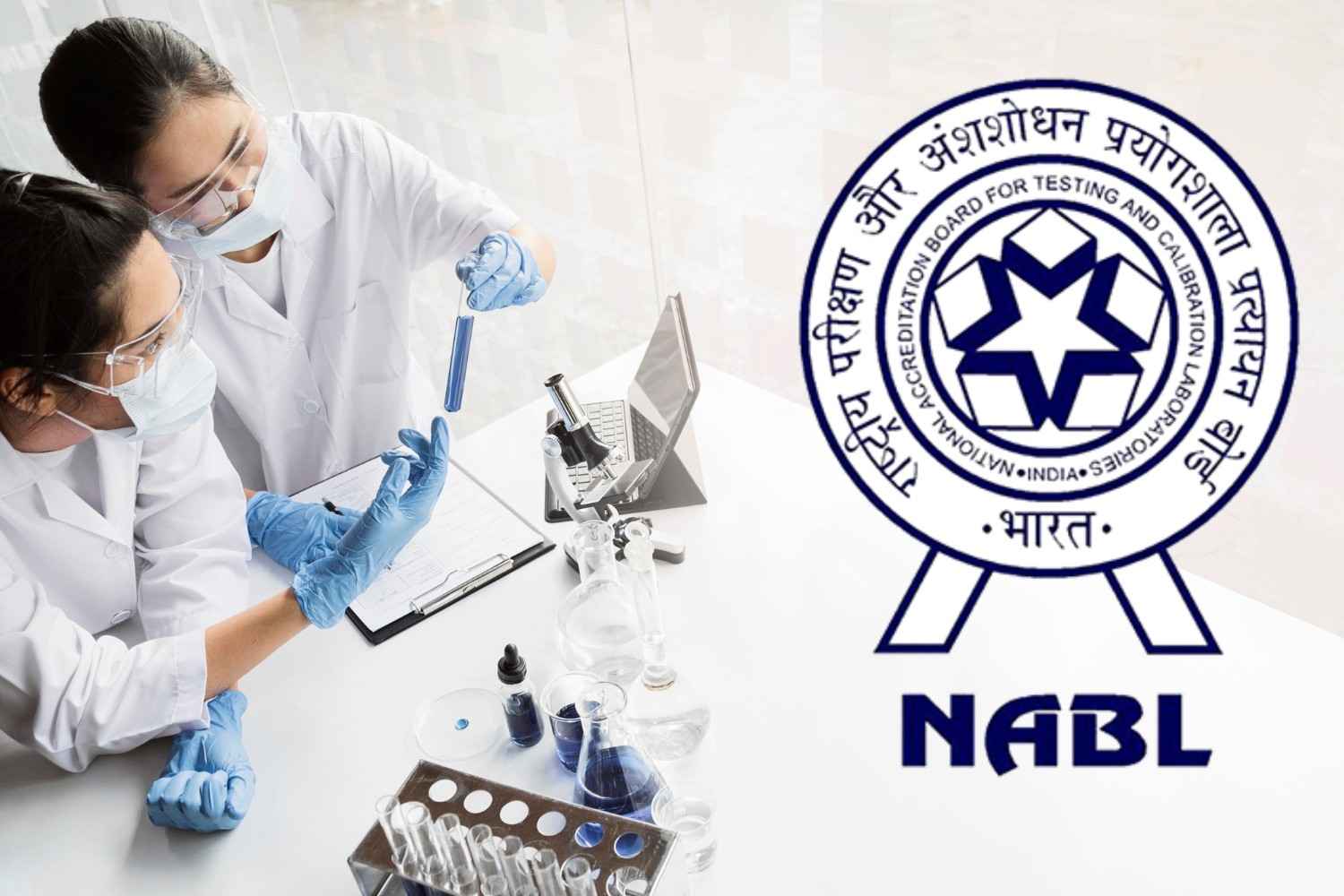Steps to Obtain NABL Accreditation and a Certificate of Conformity

Strong 8k brings an ultra-HD IPTV experience to your living room and your pocket.
When it comes to ensuring quality and reliability in testing and calibration laboratories, obtaining NABL Accreditation and a Certificate of Conformity is paramount. The National Accreditation Board for Testing and Calibration Laboratories (NABL) is the body responsible for accrediting laboratories in India, ensuring that they operate in accordance with international standards. The Certificate of Conformity, often considered a mark of quality assurance, is a testament to a laboratory's adherence to specific standards, providing stakeholders with confidence in the accuracy and reliability of its testing results.
Below, we delve into the essential steps to obtain NABL Accreditation and a Certificate of Conformity, shedding light on the benefits and prerequisites involved.
Understanding NABL Accreditation
NABL Accreditation is a formal recognition of a laboratory's competence to perform specific tests and calibrations. It is crucial for laboratories aiming to assure their customers of precise measurement results. NABL Accreditation facilitates trade and acceptance of products globally, minimizes retesting, and increases confidence in communication for both nationally and internationally accepted standards.
Step 1: Preparation and Understanding
Before embarking on the journey to NABL Accreditation, laboratories must familiarize themselves with the NABL criteria and guidelines. Understanding ISO/IEC 17025:2017, which addresses general requirements for the competence of testing and calibration laboratories, is critical. Laboratories should also assess their equipment, personnel skills, environment conditions, and quality management systems against these standards.
Step 2: Applying for NABL Accreditation
The actual NABL application process involves submitting relevant documentation. The laboratory must complete the 'Application Form for Testing and Calibration Laboratory Accreditation,' available on the NABL website. This includes basic information like the scope of accreditation, details on employees, equipment lists, and procedures.
Step 3: Documentation and Implementation
A robust Quality Management System (QMS), documented in accordance with ISO/IEC 17025:2017, must be established. Documentation includes creating quality manuals, control procedures, policies, and records. Implementing these procedures effectively is vital for demonstrating adherence to standards. Quality assurance policies must be formulated, covering aspects like staff training, equipment maintenance, testing protocols, and report generation.
Step 4: Internal Audit and Management Review
Before inviting NABL for assessment, laboratories should conduct internal audits to identify any potential non-conformance issues. Management reviews are also necessary for assessing the effectiveness of enforcing the laboratory's established quality systems. The objective is to rectify any anomalies and ensure everything is in perfect operational order.
Step 5: Accreditation Assessment
The NABL assessment involves evaluating the laboratory’s capabilities to perform specified tests/calibrations. This is performed by NABL-appointed assessors who examine both documentation and practical competence. Laboratories must demonstrate technical proficiency, consistency, and accuracy in their procedures. Any non-conformities identified during the assessment must be addressed immediately.
Step 6: Grant of Accreditation
Upon successful assessment and clearance of any non-conformities, laboratories receive accreditation from NABL. The accreditation certificate outlines the scope of accreditation, which details the specific tests/calibrations the laboratory is qualified to perform under the standards set forth by NABL.
Certificate of Conformity: A Testament to Quality
Once NABL Accreditation is secured, laboratories can pursue a Certificate of Conformity. This certificate serves as evidence that a product, service, system, or installation meets the specified requirements within those standards. It assures customers and stakeholders that the product or service is safe, reliable, and of high quality.
Step 7: Determining the Scope
Before acquiring a Certificate of Conformity, it’s critical to clarify and determine the scope of conformity. This involves outlining which aspects of your testing or calibration process require certified adherence to particular standards.
Step 8: Harmonizing Standards
Aligning your quality management system with international harmonized standards is pivotal. This may involve recalibration of equipment, additional training for personnel, or enhancements in testing protocols to meet the stringent requirements for a Certificate of Conformity.
Step 9: Compliance Audit
Similar to the NABL initial assessment, a compliance audit is essential. This audit not only evaluates adherence to specific standards but also rates the overall readiness of the laboratory for certification. Audits help identify any gaps in conformity and allow laboratories to address them timely.
Step 10: Issuance of Certificate of Conformity
Once the laboratory satisfies all compliance requirements, the Certificate of Conformity is granted. This certification symbolizes adherence to rigorous international standards and is crucial for accessing wider markets where conformity certification is mandatory.
Benefits of NABL Accreditation and Certificate of Conformity
Achieving NABL Accreditation and obtaining a Certificate of Conformity come with numerous benefits. These certifications not only underscore a laboratory’s commitment to maintaining high standards but also provide competitive advantages in the market. To explore financial solutions and services that support accredited laboratories, you can also check out the Bajaj Finserv app, which offers easy access to business loans, equipment financing, and other essential tools for operational growth.
Enhanced Credibility: NABL Accreditation reflects a laboratory’s technical competence, while the Certificate of Conformity assures product quality, augmenting trust among clients and stakeholders.
Increased Market Access: These certifications open doors to international markets by meeting global standards, facilitating trade, and reducing barriers.
Operational Efficiency: Adhering to stringent standards encourages efficient practices and risk management in operations.
Customer Satisfaction: Ensuring precise and reliable testing results ultimately leads to greater customer satisfaction and retention.
Conclusion
In conclusion, obtaining NABL Accreditation and a Certificate of Conformity is essential for laboratories committed to quality and excellence. By adhering to the steps outlined above, laboratories not only prove their technical competency but also embrace a culture of continuous improvement and reliability, paving the way for global recognition and success.
Note: IndiBlogHub features both user-submitted and editorial content. We do not verify third-party contributions. Read our Disclaimer and Privacy Policyfor details.


